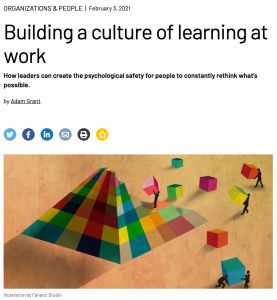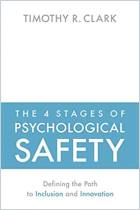
Building a Culture of Learning at Work
How leaders can create the psychological safety for people to constantly rethink what’s possible.
Recommendation
Many organizations fall short of their goal to create a culture of continuous learning. To be successful, says renowned organizational psychologist and best-selling author Adam Grant, senior leadership must get comfortable with getting real. Management must talk openly and candidly about how they learn from their own mistakes, so their employees feel safe enough to do the same. Learning professionals and managers who want to get serious about building an honest, open and dynamic company culture will benefit from Grant’s cutting-edge research.
Summary
About the Author
Adam Grant is the best-selling author of Think Again: The Power of Knowing What You Don’t Know and Originals: How Non-Conformists Move the World. He is an organizational psychologist at the Wharton School.




























Comment on this summary